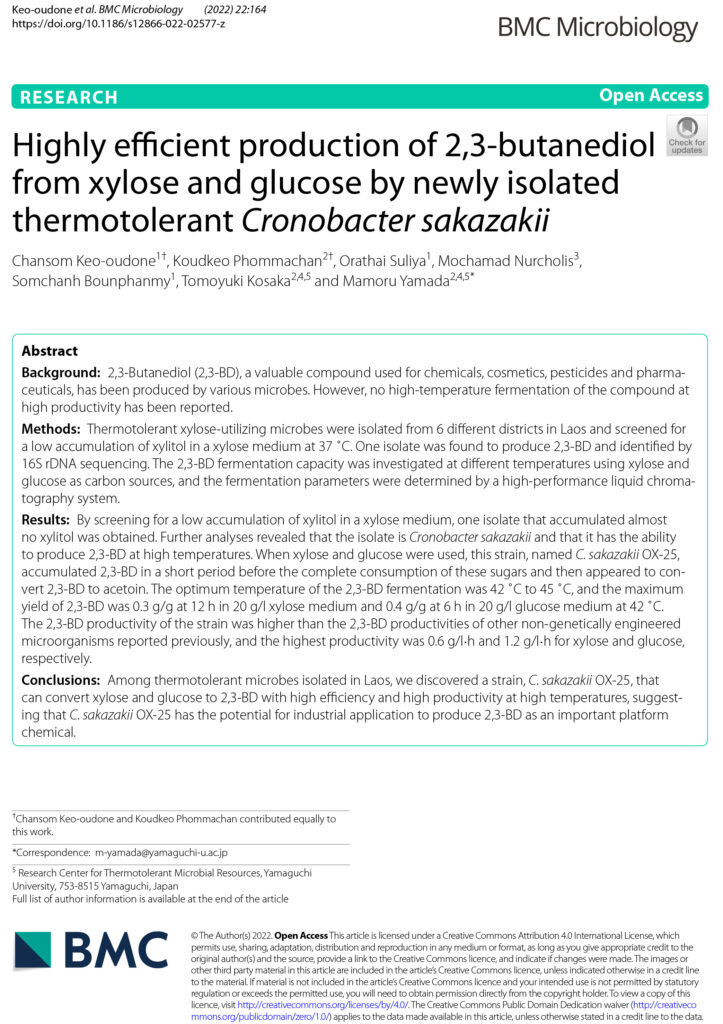Background: 2,3-Butanediol (2,3-BD), a valuable compound used for chemicals, cosmetics, pesticides and pharma‑ ceuticals, has been produced by various microbes. However, no high-temperature fermentation of the compound at high productivity has been reported.
Methods: Thermotolerant xylose-utilizing microbes were isolated from 6 diferent districts in Laos and screened for a low accumulation of xylitol in a xylose medium at 37 ˚C. One isolate was found to produce 2,3-BD and identifed by 16S rDNA sequencing. The 2,3-BD fermentation capacity was investigated at diferent temperatures using xylose and glucose as carbon sources, and the fermentation parameters were determined by a high-performance liquid chroma‑ tography system
Results: By screening for a low accumulation of xylitol in a xylose medium, one isolate that accumulated almost no xylitol was obtained. Further analyses revealed that the isolate is Cronobacter sakazakii and that it has the ability to produce 2,3-BD at high temperatures. When xylose and glucose were used, this strain, named C. sakazakii OX-25, accumulated 2,3-BD in a short period before the complete consumption of these sugars and then appeared to con‑ vert 2,3-BD to acetoin. The optimum temperature of the 2,3-BD fermentation was 42 ˚C to 45 ˚C, and the maximum yield of 2,3-BD was 0.3 g/g at 12 h in 20 g/l xylose medium and 0.4 g/g at 6 h in 20 g/l glucose medium at 42 ˚C. The 2,3-BD productivity of the strain was higher than the 2,3-BD productivities of other non-genetically engineered microorganisms reported previously, and the highest productivity was 0.6 g/l·h and 1.2 g/l·h for xylose and glucose, respectively.
Conclusions: Among thermotolerant microbes isolated in Laos, we discovered a strain, C. sakazakii OX-25, that can convert xylose and glucose to 2,3-BD with high efciency and high productivity at high temperatures, suggest‑ ing that C. sakazakii OX-25 has the potential for industrial application to produce 2,3-BD as an important platform chemical.
Types:
published in 2022, language




